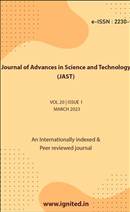Development of a Prediction Model for Construction Project Cost in India: an Analytical Approach A Review
DOI:
https://doi.org/10.29070/mmrynp32Keywords:
construction project cost, prediction model, India, analytical approach, review, building projects, cost overruns, schedule delays, project scope, resource allocationAbstract
The fundamental problem in the construction industry is that building projects are completed attaken a tolls significantly higher than estimated venture taken a tolls consequently, it is fundamental todevelop a taken a toll forecast show that detain all components influencing the extend taken a toll bymeans of relapse examination. Development costs are continuously inclined to vacillations, with a longtermdesign of expanding, making the estimating prepare a difficult errand. Vacillations within the fetchedof building materials have a noteworthy affect on foreseeing the esteem of a venture and, as a result, onthe project's great conclusion It is well known that civil engineering projects are prone to cost overrunsand schedule delays. Lack of project scope and frequent changes leads to a negotiation process interms of cost and time between the first partyowner and the second partycontractors. In the project lifecycle, cost forecast is a precursor to budget prices and resource allocation, thus it is critical for anyorganization. The following objectives are framed based on the literature study identify the constructioncost predictability of various tools, identify the various influencing factors to predict the material price ofcement and steel, model the Construction Cost Index (CCI), predict the construction duration (Especiallyfor highway projects, as compared to other kind of projects. They are having more obstacles to completethe task), predict the land value, Regarding this issue this paper find the best methodology for thePrediction Model for Construction Project Cost by analysising the different researchers papersresearch.Downloads
References
Ashuri,B. and Lu,J., Time Series Analysis of ENR Construction Cost Index, Journal of Construction Engineering and Management, 136 (11) (2010), 1227–1237.
Abu Hammad,A. A., Ali,S. M. A., Sweis,G. J., and Sweis,R. J., Statistical Analysis on the Cost and Duration of Public Building Projects, Journal of Management in Engineering, 26 (2) (2010), 105–112
Arbietman,D., Lirov,E., Lirov,R., and Lirov,Y., E-Commerce for Healthcare Supply Procurement., Journal of healthcare information management : JHIM, 15 (1) (2001), 61–72.
Cao,M.-T., Cheng,M.-Y., and Wu,Y.-W., Hybrid Computational Model for Forecasting Taiwan Construction Cost Index, Journal of Construction Engineering and Management, 141 (4) (2015), 04014089
Jour,A. and Nahmens,I., Volatility Forecast of Construction Cost Index Using General Autoregressive Conditional Heteroskedastic Method, Journal of Construction Engineering and Management, 142 (1) (2016), 04015051.
Knox,S. and Burkard,A. W., Qualitative Research Interviews, Psychotherapy Research, 19 (4–5) (2009), 566–575.
Mohamed,A. and Celik,T., Knowledge Based-System for Alternative Design, Cost Estimating and Scheduling, Knowledge-Based Systems, 15 (3) (2002), 177–188.
Regmi,H. R., Sharma,A., Pokharel,P., and Mahato,S. N., On TECHNICAL EXCHANGE ON ECONOMIC CENSUS WITH CAPMAS , EGYPT, (March) (2019), 1–29..
Smith,A. and Mason,A. K., Cost Estimation Predictive Modeling: Regression versus Neural Network, Engineering Economist, 42 (2) (1997),
Sjöström,C., Durability of Building Materials and Components 7, Durability of Building Materials and Components 7, 9781315025 (2014), 1–685
Tysoe,B. A., Construction Cost and Price Indices: Description and Use. Spon Press.
Wilmot,C. G. and Mei,B., Neural Network Modeling of Highway Construction Costs, Journal of Construction Engineering and Management, 131 (7) (2005), 765–771.
Xu,J. and Moon,S., Stochastic Forecast of Construction Cost Index Using a Cointegrated Vector Autoregression Model, Journal of Management in Engineering, 29 (1) (2013), 10–18.






